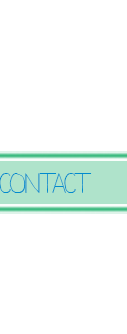If you are using the envelope system to manage your Spending Plan (it's very simple, read about it here) there is absolutely no reason why you can't have pretty envelopes. You can cover them easily by using some of those papers or cardstock from your stash, or even wrapping papers or scrapbooking papers and they'll put a smile on your face every time you use them. Oh, and they'll be just that little bit stronger too being reinforced with an additional layer of paper.
To cover your envelopes you will need:
- Envelopes
- Pretty papers
- A glue stick or glue dot roller
- Scissors
- Labels
| I chose pretty a pretty gingham print paper from my stash to cover the envelopes |
Take your envelope and lay it on the paper. Measure the width and then the depth with the flap open.
Draw a template onto the wrong side of the paper, including fold lines for the bottom and top of the envelope.
Step 2.
Carefully cut along the long line (don't cut along the fold lines). Fold along each of the two fold lines using a bone marker or a ruler to make the crease sharp.
| I find it easier to fold on the wrong side first, then re-fold on the right side, using a ruler to create a sharp fold |
Place the envelope on the paper with the bottom at the first fold. Run around the outside of the envelope with the glue dots and carefully stick the paper in place. Turn over and repeat for the other side of the envelope.
| The glue dots are hard to see but I just ran the dispenser around the edge of the enevelope |
Fold the envelope flap down and run the glue dots around the three sides. Flip the flap up and press it onto the paper. Fold the flap down and press the crease with your bone tool or ruler.
| I fold the tip of the envelope flap over so that the edge of the covered envelope is flat - you can cut it to shape if you'd rather |
| The labels are by Cath Kidston and just gorgeous - I love pretty labels |
I knew that when the gas bill came in there would be money in the Gas envelope to pay it. When it was grocery shopping day (in those days I only shopped every fourth Thursday) I knew that once the money in the envelope was gone, that was it until the next shopping day.
Once a fortnight I would to the bank and withdraw the money we needed for the fortnight. I had a list of denominations I needed and I'd get the exact amounts. For instance if the kinder fees were $3.75 and the petrol money was $30 I'd withdraw a $20, a $20, a $2, a $1, 50c, a 20c and a 5c and put the exact amount in the envelope.
Our budget was tight, just $387 a month to cover all our expenses except our mortgage and the rates, so having envelopes with the cash to pay the bills at hand was very reassuring. It also took away the stress of worrying about the bills, and at that time one less stress was a blessing.
It may be old fashioned, but envelope budgeting still works. If you are having trouble sticking to your household budget try it.



















.jpg)



I really like the idea, but what if you don't pay for things with cash, like bills? Would love to hear some suggestions :)
ReplyDeleteAmy
Amy, you have an account just for bills. Work out how much per bill per pay cycle needs to go in there and it only gets used for those bills (no random spending). If you can, it helps to build a slush fund into that account to start with in case multiple bills arrive before you've built up enough money to cover them. So, if a particular bill comes every month and you get paid every fortnight you get the amount of the bill x 12 (for a year) divide by 26 (for the fortnight). Thats the amount for that bill you put into the account.
ReplyDeleteVery nice idea.
ReplyDeleteExcuse the obvious question.... but if you have a mortgage how can you call yourself debt free?
ReplyDeleteIf this question is for me, we don't have a mortgage, haven't had one for over 10 years - or any debt at all, we are debt free.
DeleteCath.....That is so good that you have paid out your mortgage 10 years ago......it shows us with careful planning, saving and spending you have not only paid your mortgage out...but continued to thrive on limited income with a family to support! I admire your discipline...and am now keen to actively do the same with my mortgage!
Delete